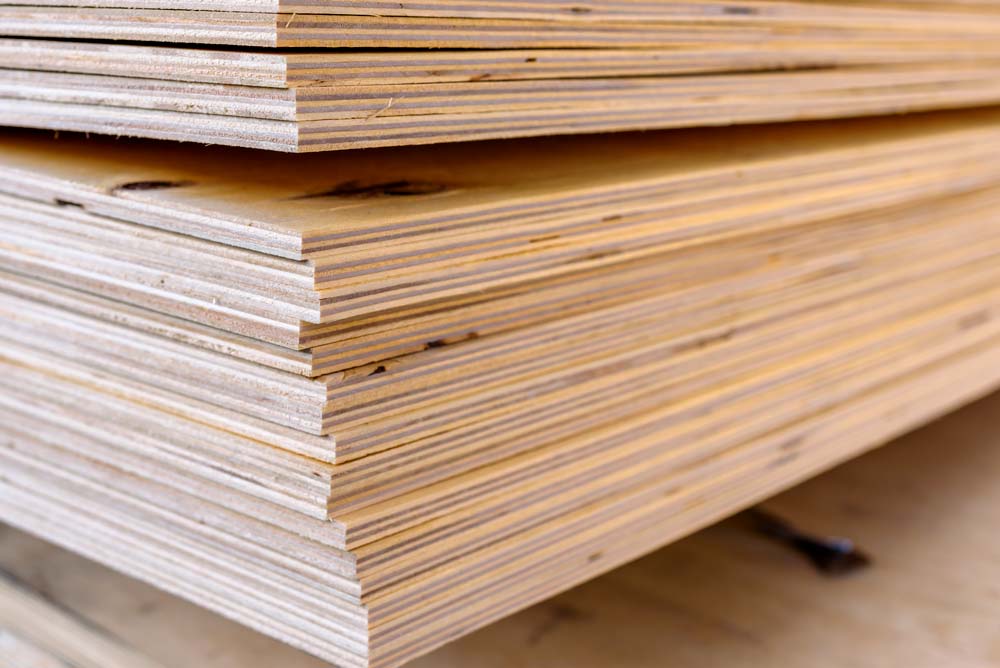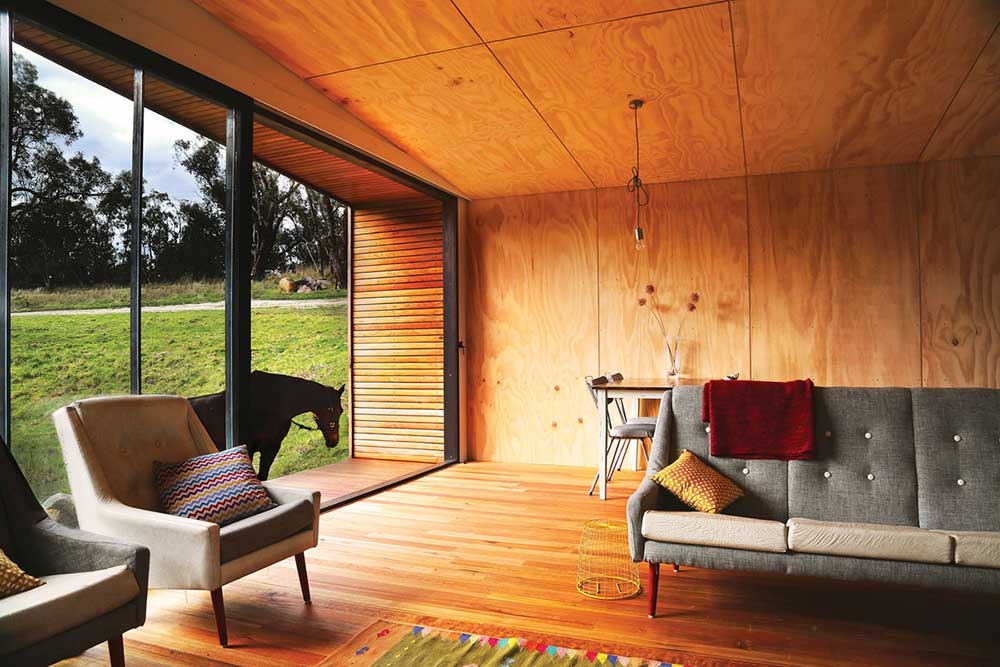Austim– Plywood is a thin wooden sheet of material consisting of two or more layers of timber bonded with heat, pressure, and strong resins with the direction of the grain alternating to create a robust composite material.
There are several kinds of plywood which have different properties based on their manufacture and intended application. Here we will outline the defining factors in each grade, the finish and treatments that determine the different grades.

Plywood manufacture
Four types of glue bonds are used for plywood manufacture, in decreasing order of durability.
· Type A bond uses a phenol-formaldehyde resin which is specified for marine and exterior plywood and will not weaken under wet conditions, heat, or cold.
· Type B bond uses a melamine fortified urea formaldehyde resin and is suitable for exterior applications including concrete formwork.
· Type C and D bonds use urea-formaldehyde resin and are both interior bonds and are not recommended for structural applications.
Veneers
There are five veneer qualities specified as A, S, B, C and D in descending order. The face’s veneer grade is given first followed by the back veneer grade. E.g. Where only one face will show such as in wall cladding the veneer quality could be given as AD.
· A is a high-quality appearance grade veneer for decorative uses.
· S is an appearance grade veneer which allows more natural characteristics.
· B is suitable for high-quality paint finishing.
· C has a solid makeup and is designed for non-visual applications.
· D is a non-appearance grade explicitly designed for structural applications.
Strength and stability
In plywood boards, the outermost veneer has a significant influence on strength and stiffness. An A or B grade veneer will increase a board’s engineering properties by one stress grade.
Cross-lamination of veneer layers restricts the movement across the grain due to moisture and temperature changes. Most structural plywood has more strength in the direction of the grain, and its recommended that the face grain of structural plywood should run parallel to the span.
Treatment
All timber products may be subject to decay and termite attack under certain conditions. Direct contact with the ground is exceptionally conducive to both decay conditions and termite attack.
Preservative treatment is essential for all wood products that are permanently exposed to the weather. There are several methods of treating plywood including;
· Impregnation of veneers before manufacture
· Pressure treating the manufactured product
· Treating surfaces after production
Treating surfaces after manufacture should be done only after machining, sawing and boring the plywood. If the plywood is cut, the surface treatment is required the cut edge.
Grades
Structural Plywood
Structural Plywood is suitable for structural applications as a Type A bond is used.Structural plywood comes in eight standard stress grades and five face veneer qualities.
In exposed applications, structural plywood must be treated to ensure its full-service life and to minimise checking.The product can be specified with the appropriate veneer qualities to suit the specified application.E.g. cladding can be manufactured to a higher quality AD or BD grade.
Structural Plywood features
· Excellent damage resistance
· Allows nailing close to panel edges
· High Strength and Stiffness to Weight Ratio
· High Dimensional Stability
· Twice the shear carrying capacity of timber
· Chemically Resistant and non-corrosive
Interior Plywood

Interior plywoods are intended for use in non-structural application where a high-quality aesthetic finish is required such as interior wall panelling and fitments but must not be used in exposed, wet or damp conditions.
A grade faces should be used where a clear finish is required B grade faces can be determined where a standard paint finish is planned.
Interior plywood will have either a type C or type D bond. Type C should be used in higher humidity environments such as bathrooms or the tropics.
Interior Plywood features
· Works without sophisticated equipment
· Allows nailing close to panel edges
· Can be glued with normal wood adhesives
· Variety of finishes for a decorative appearance
· Natural beauty
· Versatility
Exterior Plywood
Exterior plywood is intended for use in non-structural, exterior application where a high-quality aesthetic finish is required. Typical applications include signs and non-structural claddings.
Exterior plywood is manufactured with a higher quality(A, B, or S grade) face with a reduced quality (C or D grade) back.
Exterior plywoods possess either a permanent Type A bond or a less durable Type B bond. All exposed exterior plywood should be treated to guard against fungal attack.
Exterior Plywood features
· No fear of delamination
· Dimensional stability under moisture changes
· Easily finished
· Works without sophisticated equipment
· Allows nailing close to panel edges
· Versatile
Marine Plywood
Marine plywood is a purpose-built structural plywood with a permanent Type A bond. It is intended for use in hulls of boats and other marine applications.
Marine plywood is made from selected species and therefore has known and consistent structural properties. The assigned stress grade is F14 and is manufactured with two A grade veneer faces.
The product can be painted or clear finished on both surfaces and provides an excellent base for paints, varnishes, and high gloss finishes.
Marine Plywood features
· High strength and stiffness to weight ratio
· High dimensional stability
· High shear and chemical resistance
· Works without sophisticated equipment
· High impact resistance
· Paintable



